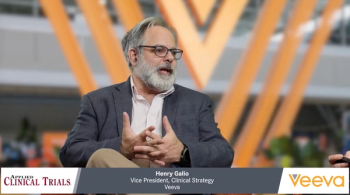
New Role To Improve Clinical Trial Performance
With several systems existing to measure performance, the most significant are the course of patient recruitment, how many patients complete the study, as well as the quality of the data generated.
When is a clinical trial performant and how do you measure this? Several metrics systems exist to measure performance
Sponsors invest a great deal of time and effort in the preparation of clinical trials, but patient recruitment often stays very much behind expectations.
The situation of clinical trials is dramatic:
· 80% of clinical studies do not reach their target of patient recruitment.
· 50% of clinical study sites recruit only one or no patients at all.
· 535.000 US$ are the average direct costs to implement a substantial amendment for phase III clinical trials.
Reasons for Bad Patient Recruitment
Medically speaking, the statement: "Patient recruitment doesn’t work." just describes a symptom. The causes for this however can be very manyfold:
· The wrong patient clientele is addressed. If patients eligible for the study according to the in- and exclusion criteria can’t make the study visits or a washout of their normal medication at the beginning of the study into their daily routines, one will not be able to win these patients for the study.
· The clinical trial is not attractive to patients. If patients do not benefit from their participation in a clinical study, or understand the social value of the study and the possible added benefit of the medication or medical product to be approved, this is a problem. It is important for sponsors to disseminate that information and for investigators to explain the study accordingly.
· The clinical study is scientifically not relevant. For physicians at university hospitals, scientific research has priority. Therefore, they favor studies with an interesting scientific research question that matches with their research topics and offers the prospect for the results to be published.
· The study sites do not fit with the study in regards to patient clientele, infrastructure or experience. Besides the number of patients with the indication that the study sites are seeing, it is crucial how many of these patients can be recruited for the study. This depends on inclusion and exclusion criteria, and various other conditions including: Are the study sites experienced with patients with this indication and the infrastructure required for the study? Which effort does the study participation mean for the patients? Are there unpleasant or even painful study procedures? Can the investigator motivate the patients to participate in?
· The study is not sufficiently payed. The study fees must be fair and correspond to the effort to be yielded, which includes being paid for the time needed to prepare for the study even if later-on they are not selected. It has to be ensured that other studies, which the study sites collaborate in, are not better rewarded.
· Instructions for technical devices are difficult to understand. The instructions for equipment to be used in the study must be clear and as simple as possible to be understood by the study team, and the study team must be trained in the use of these devices. It is recommended that the clinical monitors try out the equipment and the instructions, so that they can train the study team how to use them. If the instructions are difficult to understand, especially if they were written by the developers of the devices, they should be redacted by the sponsor and the redacted versions must be reviewed by the manufacturers. The study teams will not grapple with devices, that do not function right away, and will rather likely attend to another study, which is less elaborate.
· The study processes are difficult to integrate into the workflows of the study sites. The study teams must be able to integrate the study processes into their daily routines. It is a good investment in the success of a clinical study to deal with the study sites’ processes. In most cases, however, these are unknown to the clinical monitors.
Feasibility Analysis reconsidered
So what can be done to ensure that a clinical trial recruits well, patients complete the study, and that the quality of the data generated is high?
Slip into the shoes of the investigators and their study teams for a moment. They usually carry out several clinical studies at the same time, are under great time pressure and have to be motivated to spend enough time for your study.
The feasibility analysis therefore has to take the problems mentioned and their possible solutions into account. The study protocol has to be analyzed with regard to the potential for patient recruitment and the operational challenges of the study. Sufficient, and above all, the right questions must be asked. The study procedures and the associated time expenditure should be discussed with the investigators and their study teams. Also, the investigators should have a plausible strategy for patient recruitment.
The feasibility analysis should be started before the study protocol is final. Only by analyzing the study protocol and a thorough feasibility analysis one can make realistic statements on which study sites are appropriate for the study and which potential for patient recruitment they really have.
Clinical Trial Liaison
Clinical studies are research projects. This means certain unpredictability of their course and, despite thorough preparation challenges may arise during their conduct that then must be mastered.
Therefore the investigators and their study teams need a competent contact person who can immediately answer all questions regarding the study or ensures they are answered in a timely manner, and who in the event of difficulties, first searches for solutions with the investigational team and then with the sponsor’s study team, and who has the time to do so. The required competences of this person include analytical skills, strategic thinking, communication techniques, relationship management, as well as a well-founded understanding for the work of investigational teams.
According to section 5.18.4 of the ICH Guideline for Good Clinical Practice E6 (R2), the clinical monitor is acting as the main line of communication between the sponsor and the investigator. But the personnel resources for the monitoring of clinical trials are scarce and the clinical monitors are mainly responsible for the quality control during the study course. Therefore they can’t fill this role.
Referring to the already-established function of the Medical Science Liaison, who is mostly responsible for an entire therapy area and the management of the key opinion leaders (KOL), the most appropriate designation for this function is a Clinical Trial Liaison, since they are responsible for the guidance of the investigational teams in a particular clinical trial.
It also belongs to the tasks of the Clinical Trial Liaisons to establish and maintain an open and transparent communication with the monitors as the primary contact persons of the investigational teams. The better the integration of the study team, the better the Clinical Trial Liaison can perform their task and the greater the effect of their activity on the performance of the clinical study.
There is a clear division of work into quality assurance through the monitors and supervision of the investigational team to ensure patient recruitment and resolution of eventually arising challenges. Often a contract research organization is engaged for the monitoring and the monitors form an independent team at the contract research organization with own project management. The Clinical Trial Liaisons, however, must be perceived by the investigational teams as sponsor representatives. In order to be able to fulfill their tasks, they work very closely with the sponsor’s study team, while the monitors are often an independent team at the contract research organization with own project management. This is not good, but common practice.
Various other approaches exist to establishing the function of the Clinical Trial Liaison, among others, by various contract research organizations as well as non-profit organizations. However, most of them are limited to the aspects of supervision and relationship management, such as by PRA Health Sciences
Time and Cost Advantages
Without a thorough feasibility analysis and supervision of the investigational team by the Clinical Trial Liaisons, patient recruitment can be significantly delayed and the required number of cases can usually only be reached by implementing amendments to the protocol. This results in significant delays in the course of studies of up to one year.
And these delays cost a lot of money because the entire study logistics must be maintained during this time and additional monitoring visits are required. As shown in Table 1, for the example of a neurological Phase III study with 375 patients at 42 sites in three countries and a duration of 31 months additional costs of 39.5% emerge, which can be avoided with a combination of monitoring and Clinical Trial Liaison. Compared to the original monitoring plan, there is even a slight cost reduction of 3.4%. Comparing the cost of monitoring for delayed patient recruitment with the actual costs incurring, savings of 30% of costs and 46% of working hours are achieved. This result delivers calculating the study costs with our budget calculator.
Concept of Clinical Trial Site Management
Share
Monitoring incl. Feasibility Analysis and Site Management as originally planned
100%
Monitoring incl. Feasibility Analysis and Site Management delayed by 1 year
139.5%
Clinical Trial Liaison incl. Feasibility Analysis and Site Management
32.5%
Monitoring exkl. Feasibility Analysis and Site Management
64.1%
Clinical Trial Liaison plus Monitoring
96.6%
Tab. 1: Concept of Clinical Trial Site Management and their Costs
Ideally, patient recruitment can proceed as shown in Figure 1. The blue line is the target curve, the red line is the course of patient recruitment without Clinical Trial Liaison, and the green line the course of patient recruitment when Clinical Trial Liaison is deployed.
Figure 1: Patient Recruitment with and without Clinical Trial Liaison
The deployment of Clinical Trial Liaison can contribute significantly to an improved course of patient recruitment through a thorough feasibility analysis and the guidance of the investigational teams in the conduct of clinical trials. The better the communication with the clinical monitors and their integration into the student team, the greater the effect. By selecting appropriate study sites for the study during the feasibility analysis, amendments to the study protocol can be avoided and significant savings in working time and costs can be achieved.
Web:
Robert Dannfeld, Managing Director Pharmatio GmbH
Newsletter
Stay current in clinical research with Applied Clinical Trials, providing expert insights, regulatory updates, and practical strategies for successful clinical trial design and execution.






.png)



.png)



.png)
.png)
